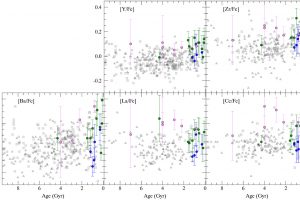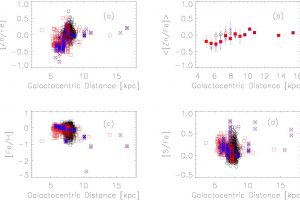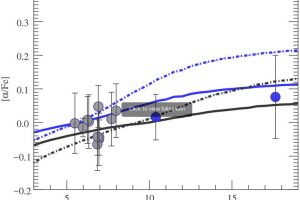Età e proprietà chimiche delle stelle giganti. Pubblicato su &A lo studio: “The Gaia-ESO survey: Calibrating a relationship between age and the [C/N] abundance ratio with open clusters” di G. Casali (INAF – Osservatorio Astrofisico di Arcetri)

Nonostante la sua importanza per lo studio dell’evoluzione di stelle e galassie, l’età delle stelle è sempre stata una proprietà elusiva. Infatti, misure affidabili dell’età delle stelle sono ristrette ad alcuni casi specifici. Tra i vari metodi usati per stimarla, come lo studio dell’abbondanza del Litio, della cinematica stellare, delle pulsazioni interne analizzate con l’asterosismologia, della rotazione o dell’attività magnetica,
» Read more


